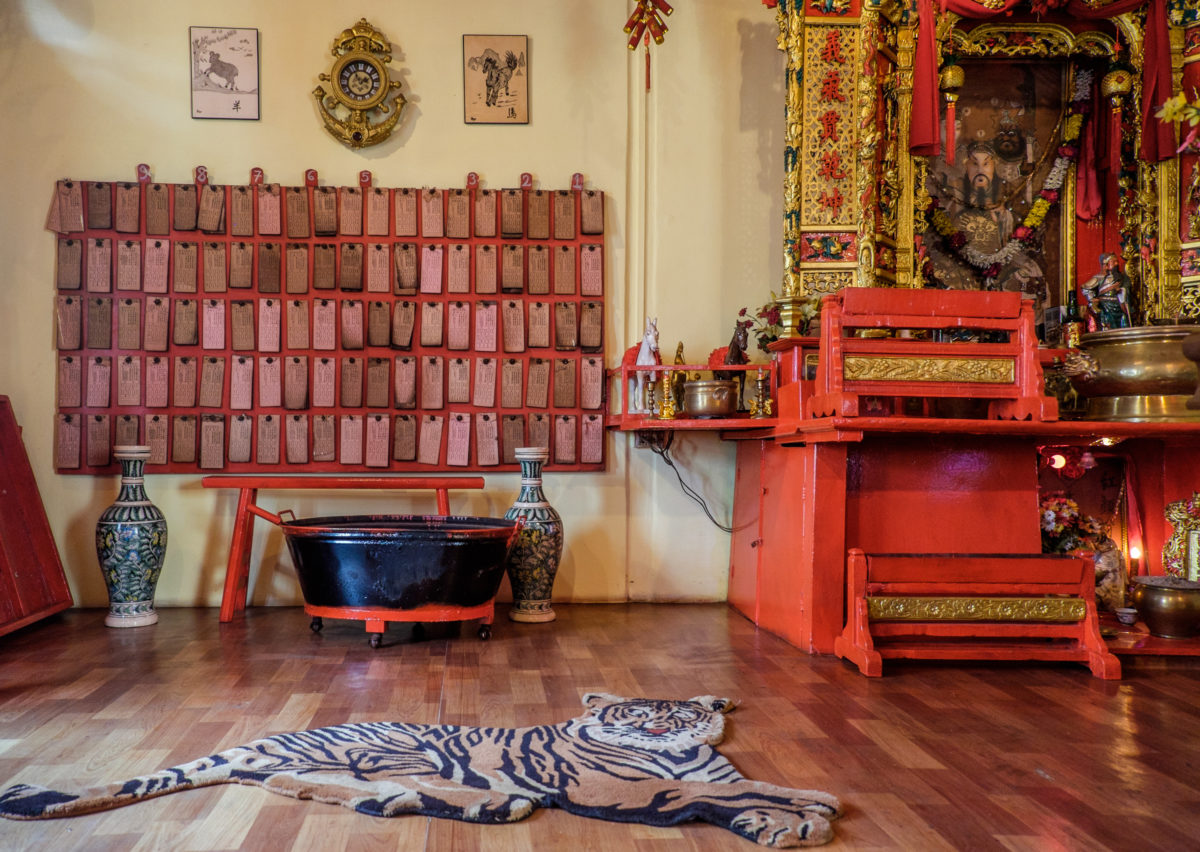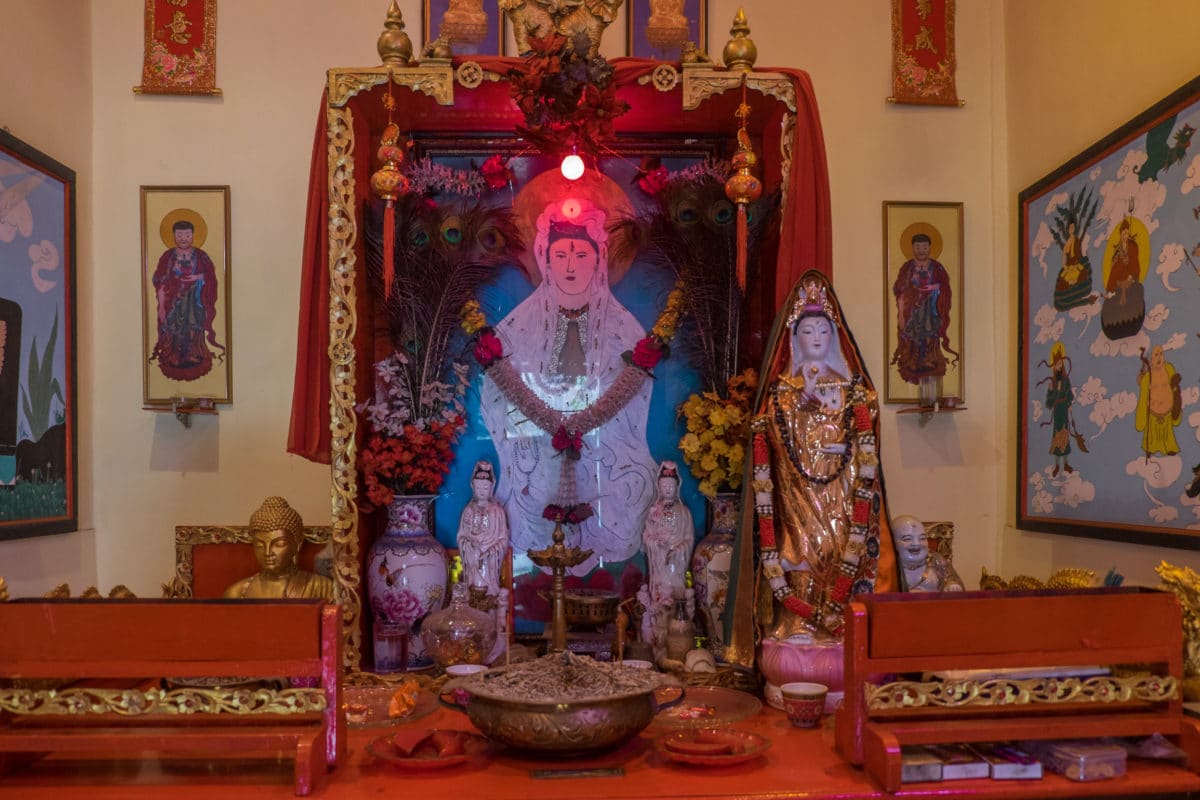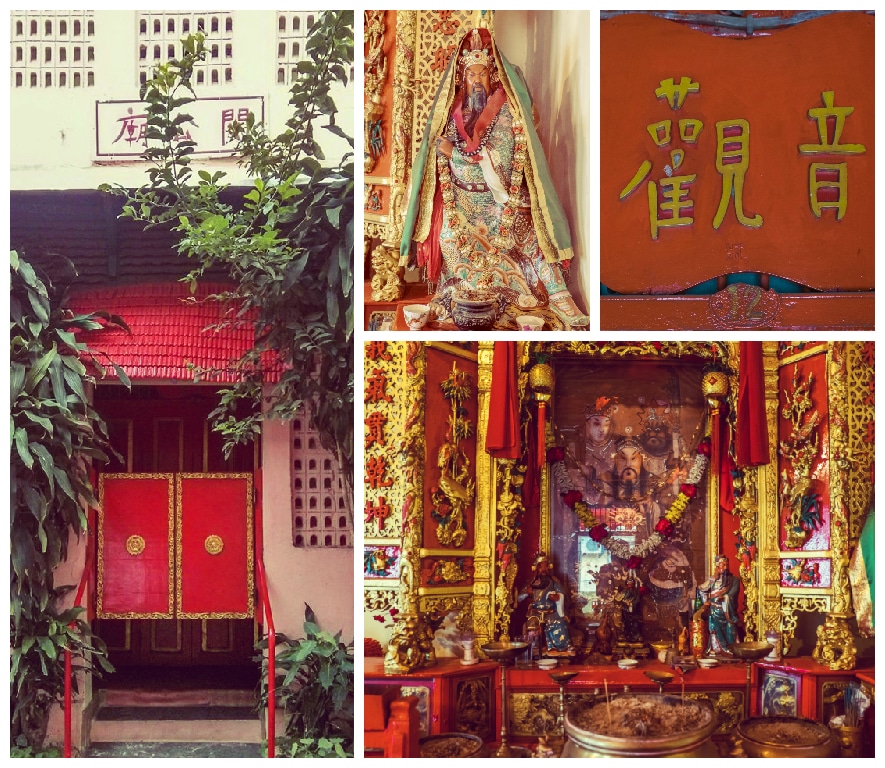One of the original Seven Isles, Mazagon is widely known to be the home of several old majestic churches, a large catholic community and the famous 18th century dockyard that builds ships for the Indian Navy. What was once a rich and affluent neighbourhood with rich Portuguese and Parsi families in large sprawling bungalows, it is now not necessarily on the path of general sightseeing in Bombay. However, tucked away in a tree lined little side street, after much searching, we found what is left of the old Chinatown in Mumbai, complete with the Kwan Tai Shek Chinese temple and cemetery.

Located a few metres away from the busy Dockyard road train station, it is difficult to imagine that this area was once a thriving Chinese neighbourhood and community. Though nothing to rival Calcutta’s famous Chinatown, the one here in Mazagon once had thousands of Chinese families, largely traders, up until the 1960s. With the 1962 Sino-Indian war, most of the community left Mumbai having faced discrimination and persecution, many were viewed as traitors. The old caretaker who opened the temple for us, told us that there are now fewer than 3000 Chinese people left, many of them old and more at home in India. We had interrupted his afternoon nap, and he was little less than welcoming and after much discussion and hand gesturing he finally opened the temple for us.

On the second floor of a two story building, there are no large dragons or obvious Chinese figurines that might mark this as a temple, except for some Chinese inscriptions on the door and building front. One enters through a simple yet elegant red and gold door on the ground floor and as you climb up to the second floor you are greeted by wise words of Confucius and other saints along the walls. The temple itself is also simple, with the alter, a large table with artifacts, markings on the walls and scriptures all in red and gold. It was a striking difference to the blueness of the mosque we had seen earlier. The temple is more of a shrine dedicated to an army general and is an important place of worship during the Moon festival and Chinese New Year. Outside the temple we don’t see any other members of the community to speak to and it is a little disappointing, though plenty of the houses and buildings have ethnic Chinese names on the doors giving the street a sense of distinction. Perhaps it was the heat of the afternoon, but the little street seemed rather forlorn as we left, as though waiting to open itself up to more curious visitors and travellers.

Such beautiful photos! 😀
Thanks Rachel! Glad you like them 🙂